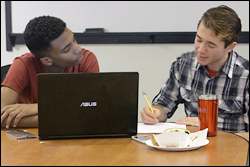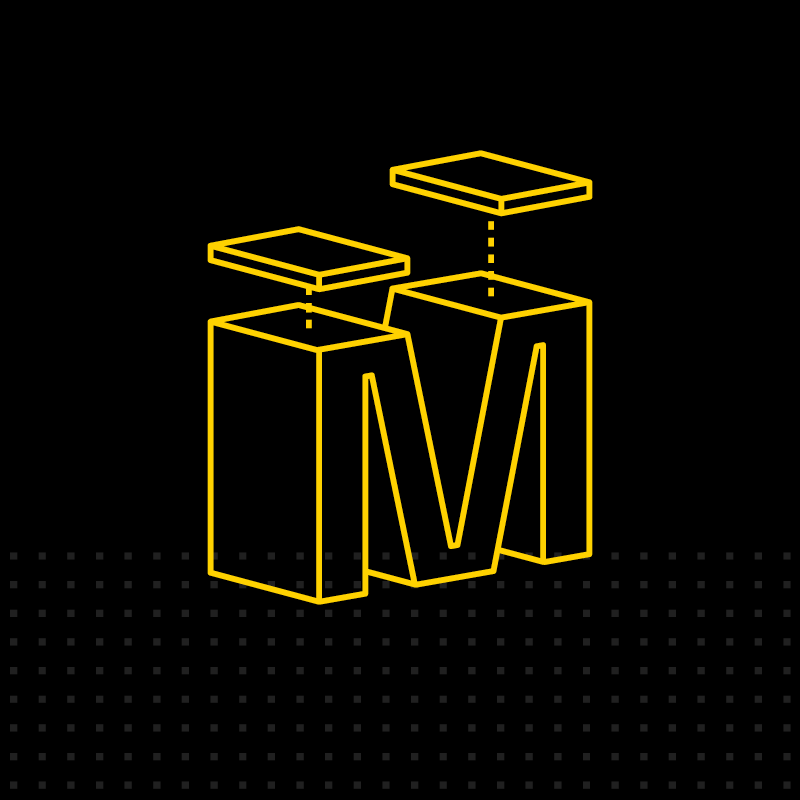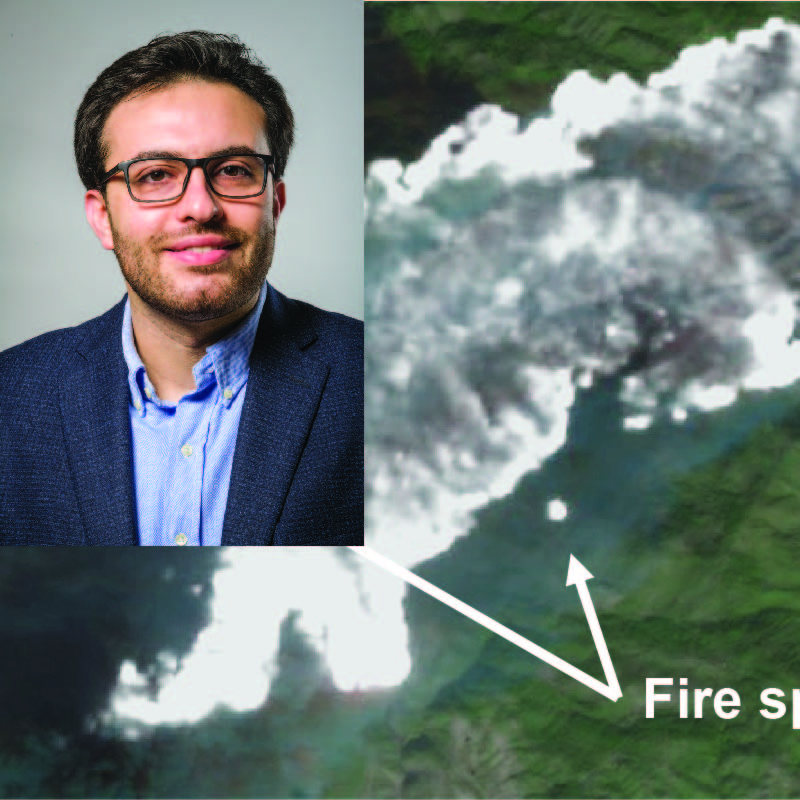News Story
Getting a Head Start on a Career In Computer Science with FPE

Tamfor Dulin (left) with Ph.D. student Isaac Leventon (right). Photo courtesy of PBS Newshour.
Tamfor Dulin knew he wanted to pursue a career in computer science or computer engineering. He wanted to improve his programming skills before heading off to college, but his high school didn’t offer any classes on the subject, and he didn’t have a lot of free time to teach himself. He found a hands-on solution in a place many people wouldn’t have imagined: an internship with the University of Maryland’s Department of Fire Protection Engineering (FPE).
Dulin, a recent graduate of School Without Walls High School in Washington, D.C., combined his senior science fair project and internship requirements by spending two semesters in FPE assistant professor Stanislav Stoliarov’s research group, where he was mentored by Isaac Leventon (Ph.D. ’15). Dulin met Leventon while participating in FPE’s Introduction to Math and Physics through Fire Dynamics program, which Leventon designed and ran.
Programming, simulations, data crunching and modeling are all tools fire protection engineers use to protect people, property and the environment, so when Dulin reached out to Leventon to ask for help in finding a mentor for his senior project, Leventon saw an opportunity that would benefit them both.
In his internship, Dulin was tasked with creating two graphical user interfaces (GUIs) for ThermaKin2D, a continuum pyrolysis modeling environment created by Stoliarov and his group. ThermaKin2D simulates material degradation and burning behavior in response to external heat transfer. Key calculations include the temperature, composition, reaction rates, heat transfer, and the contraction and expansion of the sample material. Stoliarov believes that the development of accurate modeling tools like ThermaKin2D will make it easier to design materials for the right balance of fire safety, cost, and mechanical properties.
“Currently, ThermaKin2D needs two files, Components and Conditions, that need to be manually created by the user,” Dulin explains. “[It’s] a tedious process for all users and a difficult task for new users. My GUIs simplify this creation process by correctly formatting the data inputted by the user so that the user only has to worry about inputting values.”
Despite a steep learning curve that required him to learn a new programming language, Dulin was up to the challenge.
“I was impressed by the time and effort that Tamfor put in to figure things out as we worked together, especially while keeping up with his regular coursework and college applications,” says Leventon. “He's succeeded in this project because he was able to make it his own and see it as a design challenge that he'd find a way to and want to solve. I think that's a big part of what makes engineering fun. We got to a point where he was leading the development of the project. I really couldn't have hoped for more when we started.”
This spring, Dulin was invited to the D.C. STEM Fair, where his presentation and poster on the ThermaKin2D GUIs won first place in the Computer Science category’s Senior Division. He was also invited to participate in the 38th Annual Robert H. Herndon Memorial Science Competition, hosted by The Aerospace Corporation in Chantilly, Va.
Dulin says his internship strengthened not only his programming knowledge and desire to pursue a career in the computer industry, but also his confidence in his own skills. He is far less reliant on having to look up answers or ask for help. The best thing about the experience, he says, was the support he received from Leventon. “We have a great connection and it [didn’t] seem like I [was] working for him but rather with him,” he says. “I now enjoy challenges…I learn so much and it is a fun process.”
This fall, Dulin will attend the University of Maryland Baltimore County (UMBC), where he plans to major in computer science or computer engineering.
Published July 7, 2015









